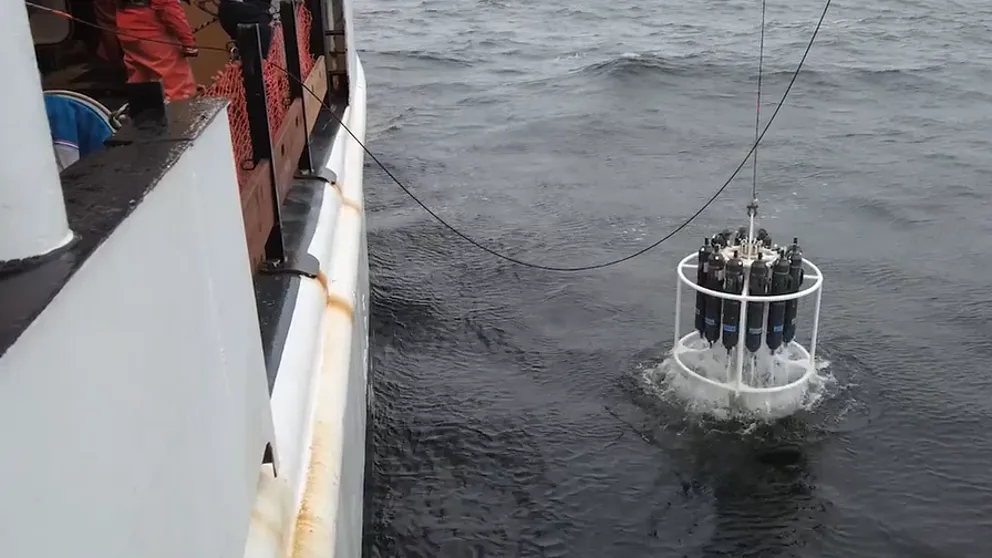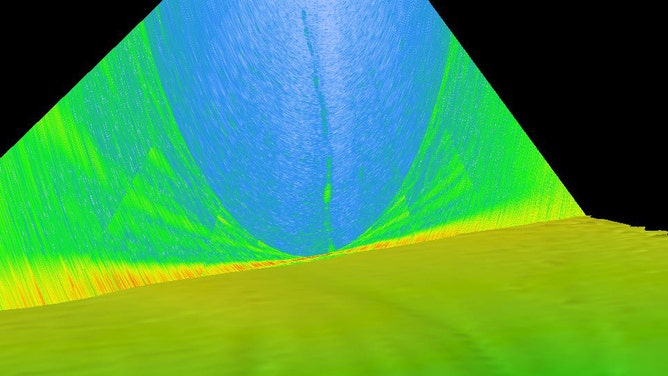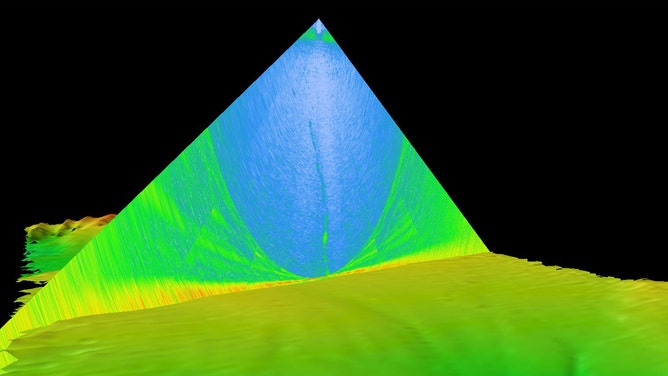Mysterious 'noodly line' in ocean floor leads to important discovery off Alaskan coast
The crew aboard the NOAA Ship Okeanos Explorer, which had set out on a 3-week expedition to map the seafloor of the Aleutian Islands and Aleutian Trench on May 5, discovered gas seeps soon after they traversed over the Aleutian Trench on Monday.
NOAA scientists are studying Alaska's marine ecosystems
The EcoFOCI program helps determine impacts on Alaska's ecosystems from a changing climate. (NOAA)
ALEUTIAN TRENCH, Alaska – A NOAA expedition to map the ocean floor revealed three previously unmapped gas seeps near the Aleutian Trench off the coast of Alaska.
Gas seeps are cracks in the ocean floor where gases that have been trapped within the Earth’s crust are able to escape as bubbles into the water above, according to NOAA.
One of those gases is methane, a source of energy for microbes that live in the deep sea. This means that where there are methane gas seeps, microbes – along with animals that eat microbes – may be nearby.
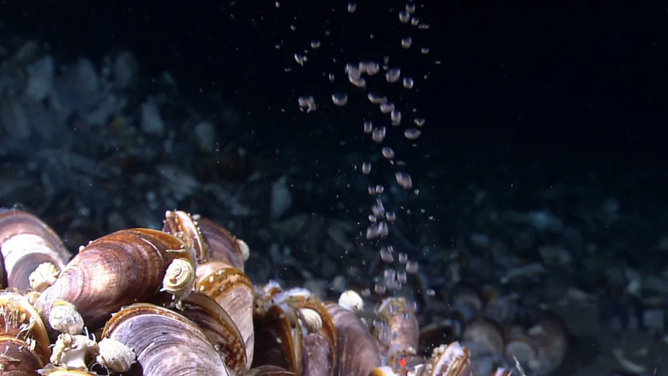
FILE - Methane gas seep.
(NOAA / NOAA)
The crew aboard the NOAA Ship Okeanos Explorer, which had set out on a 3-week expedition to map the seafloor of the Aleutian Islands and Aleutian Trench on May 5, discovered gas seeps soon after they sailed over the Aleutian Trench on Monday.
DRONE COMPLETES MAPPING OF PREVIOUSLY UNCHARTED OCEAN FLOORS OFF ALASKA, CALIFORNIA
Evidence of a gas seep occurred while the crew were processing data from their multibeam sonar, technology that sends out multiple sonar, or sound, waves simultaneously to the seafloor from the hull of their ship.
The sound waves then bounced off the seafloor and made their way back to the ship, where measurements of the seafloor were made based on the amount of time the sound waves took to return. The measurements were then processed and represented on colorful maps, with each color measuring a certain depth of the seafloor.
With a map produced on Monday, the crew noticed a "noodly line" trailing up about 7,500 feet from the seafloor. In one image, the noodly line appears as a neon green line snaking upward from the yellow-orange seafloor.
According to NOAA, this noodly line was created by multibeam sonar sound pulses bouncing off of bubbles close to the seafloor. This indicated that the team had discovered a gas seep.
In another mapping image, bubbles escaping from a gas seep are depicted as pixels trickling upward from the seafloor.
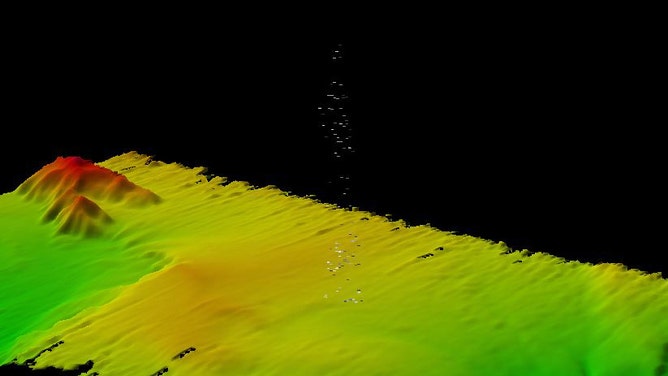
Three-dimensional-modeled multibeam bathymetry data with the gas seep bubbles detected near the Aleutian Trench depicted as pixels extending from the middle of the model.
(Amanda Bittinger, Sunset Hydrographics / NOAA)
The expedition team went on to discover a total of three gas seeps around the Aleutian Trench.
The expedition is the first in a series of "Seascape Alaska" expeditions by NOAA to explore poorly understood deepwater areas off of Alaska’s shores.
